On 22 December 2020, The European Commission has published Implementing Regulation (EU) 2020/21511 on harmonised marking specifications on certain single-use plastic products. The specifications apply from 3 July 2021.
As required by Single-Use Plastic Directive (EU) 2019/9042, the marking specifications for four product groups are established. The markings must be labelled to inform consumers about the presence of plastic in the products, means of inappropriate waste disposal and the negative impact of littering.
Product Group:
- Sanitary Towels [pads]
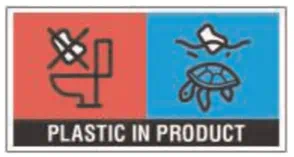
- For packaging with the surface area of 10 cm2 or more.
- Stickers could be affixed for products placed on the market before 4 July 2022.
Product Group:
- Tampons and tampon applicators
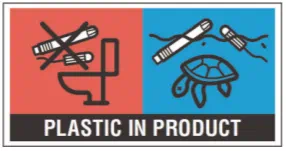
- For packaging with the surface area of 10 cm2 or more.
- Stickers could be affixed for products placed on the market before 4 July 2022
Product Group:
- Wet wipes (i.e. pre-wetted personal care and domestic wipes)
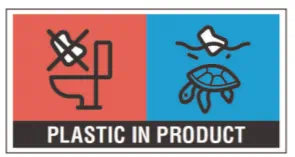
- For packaging with the surface area of 10 cm2 or more.
- Stickers could be affixed for products placed on the market before 4 July 2022.
Product Group:
- Tobacco products with filters and filters marketed for use in combination with tobacco products
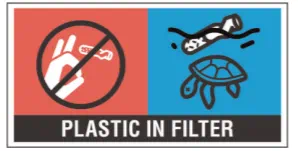
- For packaging with the surface area of 10 cm2 or more.
- For tobacco with filters, it is allowed the marking to be placed on external back of unit packet and on the outside packaging.
- Stickers could be affixed for products placed on the market before 4 July 2022.
Product Group:
- Beverage cups made partly from plastic
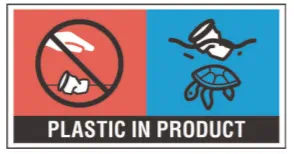
- Beverage cups made wholly from plastic
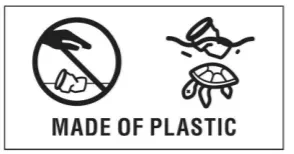
- The marking must be placed on the cup surface away from the rim.
- Placing marking on the base of the cup is not allowed.
- In case of rigid cups, the marking must not be embossed/engraved on the ridges.
- Stickers could be affixed for products placed on the market before 4 July 2022.
The black line bordering the marking or grey background is not part of the specifications. Its only purpose is to provide contrast against the white page.
The size, position and design of the marking are laid down in the Regulation. Moreover, specific format, colours, minimum resolution and font sizes to be used must be followed.
The marking should be placed on the external front or top surface, whichever is more visible and readable (except for tobacco with filters). When opening the packaging, the marking should not be torn or made illegible.
The information text of the marking should be in upper case and Helvetica Bold font, and written in the official language or languages of the Member State(s) where the products are placed on the market.
Background
The Single-Use Plastic Directive (EU) 2019/904 was published in June 2019. The Member States must apply these measures no later than 2 years after the entry into force of the Directive (i.e. by July 2021). The new law, is also known as the single-use plastics (SUP) Directive, aims to prevent and reduce the impact of certain plastic products on the environment, in particular the aquatic environment, and on human health.
It will impact plastic food-contact materials and articles through, among others, a ban on certain single-use plastics, introduction of marking requirements, increased collection goals for plastic packaging, extended producer responsibility schemes, and design requirements for beverage containers.
There will be EU wide market restrictions or ban on the placing on the market of certain single-use plastics, which applies to
- cutlery, plates, beverage stirrers, straws, balloon sticks and cotton bud sticks, and
- cups, food and beverage containers made from expanded polystyrene.
In addition, the placement on the market of any SUP made from oxo-degradable plastics (oxo-plastics) will be banned. The Commission makes a necessary and clear distinction between biodegradable plastics and oxo-degradable plastics, the latter of which cannot be considered bioplastics.
The Commission is now working on the guidelines to help Member States to implement the Directive. Key discussions like how to define the term “plastic" and criteria for single-use or multiple-use have been discussed.
[1] Commission Implementing Regulation (EU) 2020/2151
[2] Directive (EU) 2019/904
Source

